MICROSCOPE-ANTIQUES.COM © 2013-21.
ZEISS/WHEATON IMMERSION OIL BOTTLE:
c. 1920'S-1960'S
Maker: T.C. WHEATON
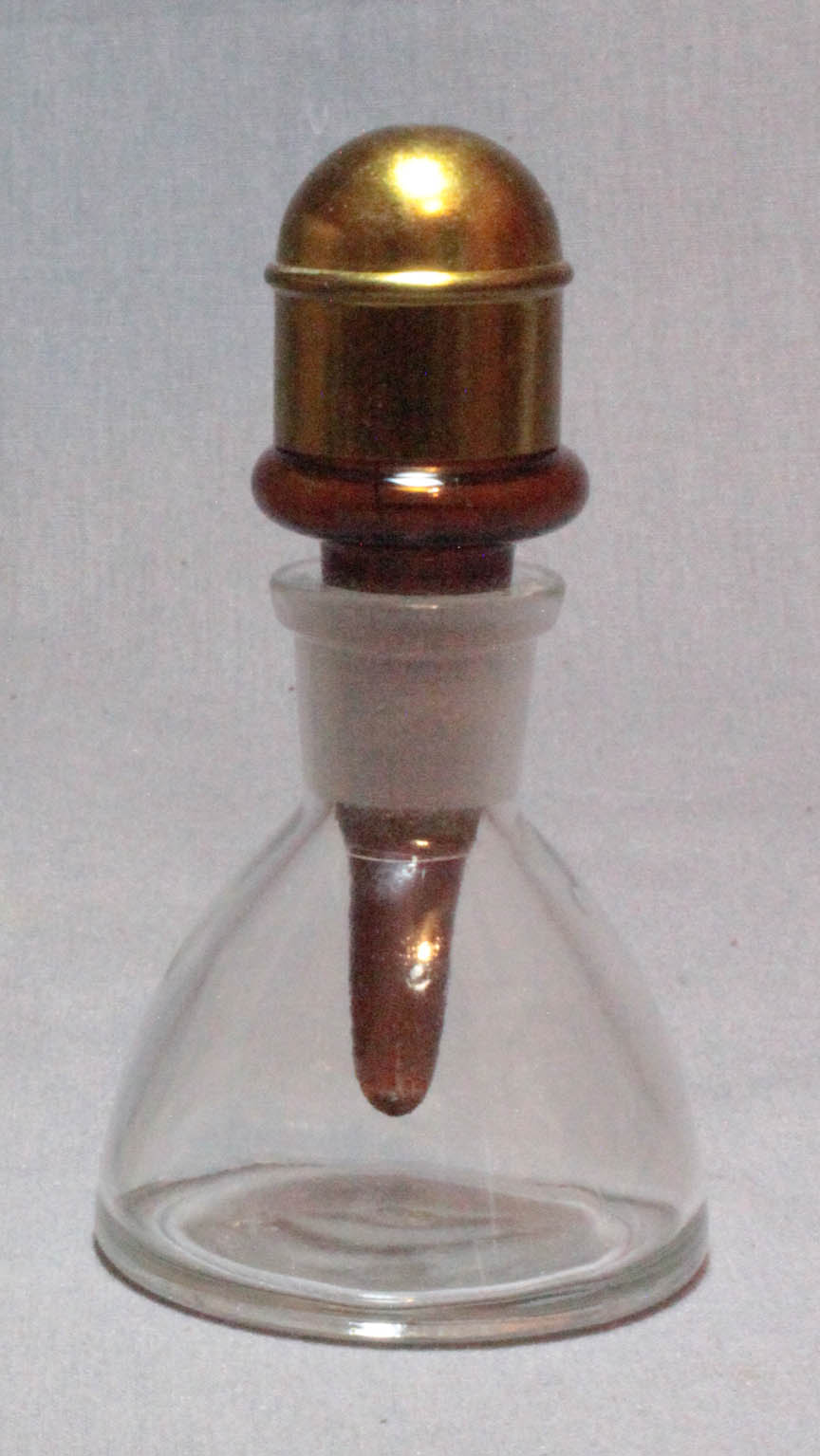
INTRODUCTION:
 Sometime in about the 1920's Zeiss* perfected the form of oil immersion bottle shown on this page. They called it their
Sometime in about the 1920's Zeiss* perfected the form of oil immersion bottle shown on this page. They called it their Combined Immersion Oil Bottle and Bottle for Cleaning Objectives and Microscopic Preparations
*. This bottle became so popular, it was widely copied. In the United States it was made by Wheaton, and initially the Zeiss name was also printed on the box. It continued to be made and sold by the T.C. Wheaton glass company through the 1960s, as is illustrated by the box shown to the left with a Zip code.
DESCRIPTION AND USE:
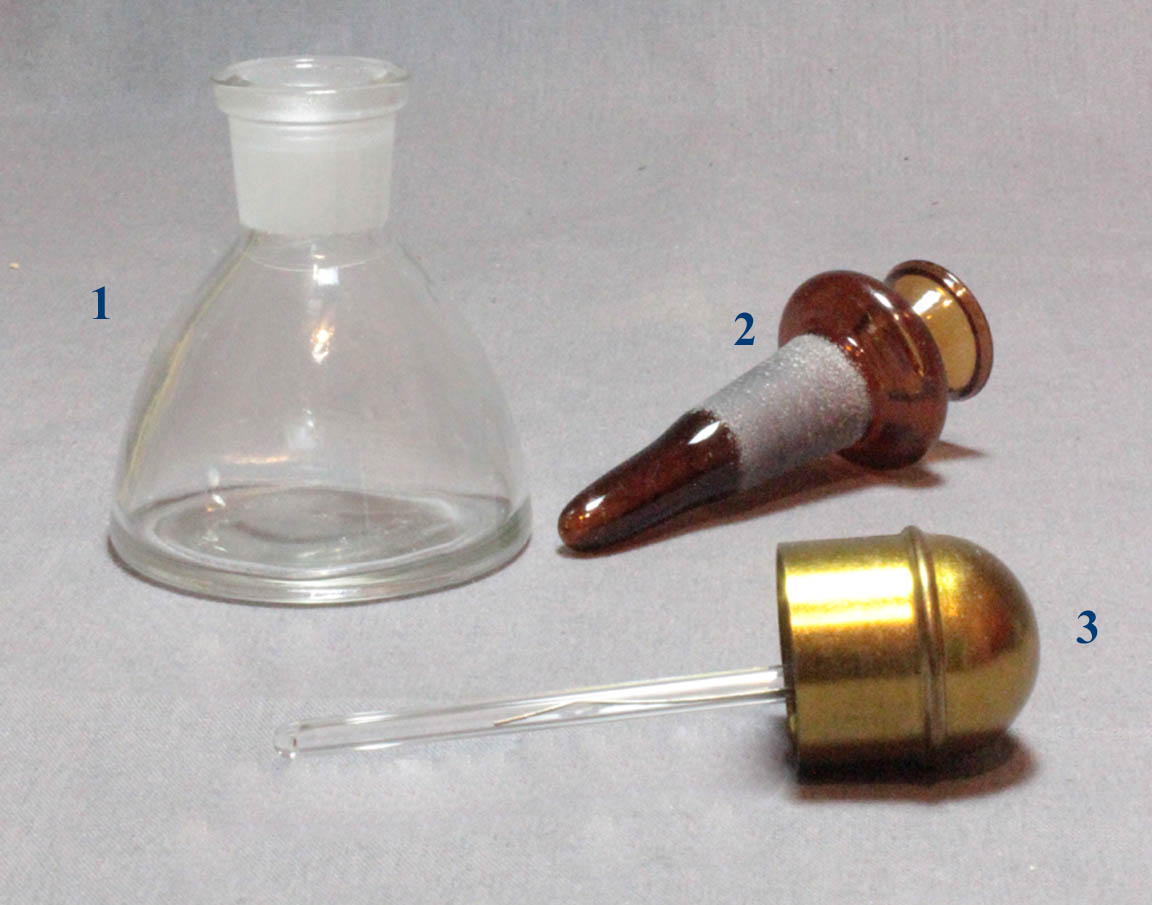
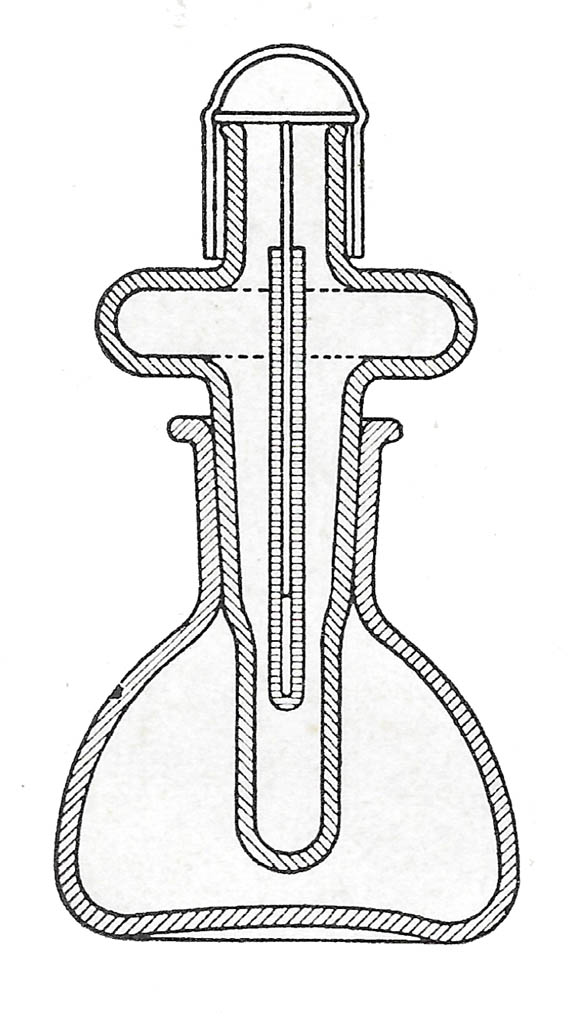
The bottle consists of three main parts. The lower vessel of clear glass (part 1) was designed to contain the cleaning fluid. It was to be filled so that the brown hollow body (part2) reaches into the fluid. The bottome outer tip of this inner bottle serves as a dropper. The fluid of the lower vessel is withdrawn by simply lifting out the brown. To the thick lower end of this, a drop would adhere, sufficiently large for most purposes, though larger quantities could be poured out of the bottle if required. The brown hollow body part (2) serves as the receptacle for the immersion oil and is designed so that the oil should fill about half of the lower cyclindrical part. The oil is withdrawn by means of the glass rod attached to the brass cap (part 3). The bend of the spring wire provides tension against the inside of the glass rod. The brown inner bottle may be laid down on a horizontal surface without danger, the oil flowing no farther than the bulbous portion, and returning to its normal position when the brown hollow body is replaced.
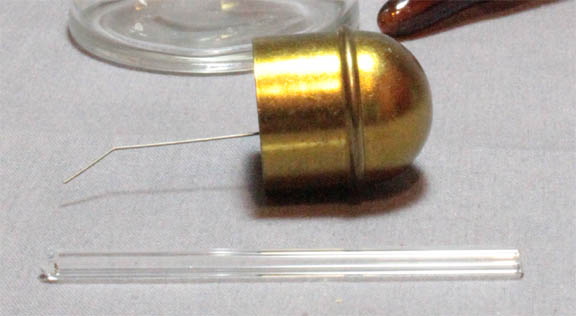
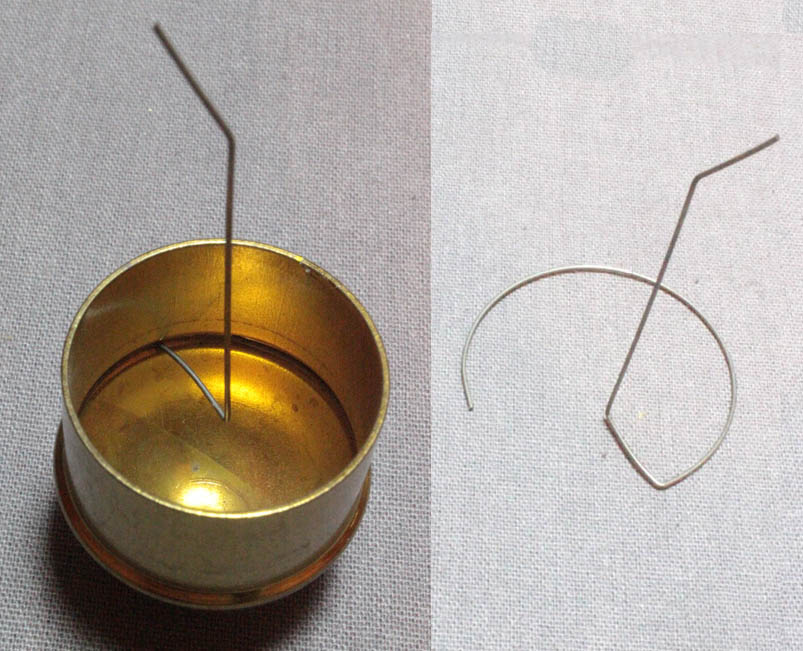
This glass rod is not fixed, but its depth into the oil can be adjusted by pushing it further up or pulling it down over the spring wire it encases. The wire is attached to the brass cap by a rounded top end, simply inserted into the groove in the cap

 Sometime in about the 1920's Zeiss* perfected the form of oil immersion bottle shown on this page. They called it their
Sometime in about the 1920's Zeiss* perfected the form of oil immersion bottle shown on this page. They called it their 


